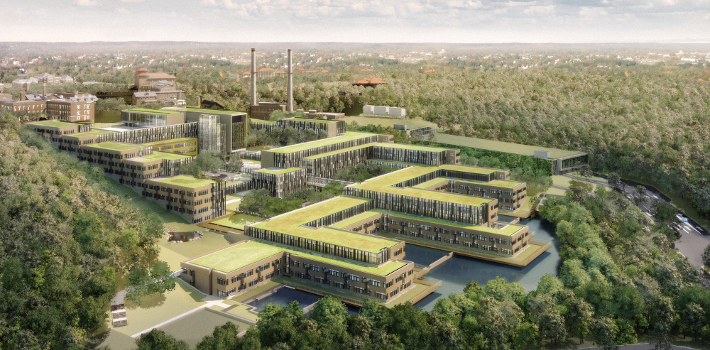
EspañolThe US federal government has a proven record when it comes to the redevelopment of blighted or underutilized areas: abject failure. Not only does it not make things any better, but it often worsens the very problems it seeks to remedy. Examples abound in the nation’s history, including almost anything the Department of Housing and Urban Development has worked on.
Federal planners seem to assume that pouring tax dollars into a given area, especially if those dollars translate to federal jobs, is some kind of economic magic bullet that inevitably leads to revitalization all by itself.
The latest iteration of this trend is seen in the construction of new offices for the Department of Homeland Security (DHS) at the St. Elizabeths Hospital campus in southeast Washington, DC. The General Services Administration has recently approved the latest phase of this development project, to the tune of US$139 million in renovations to accommodate the DHS secretary’s office.
The project is 11 years behind schedule, more than $1.5 billion over budget, and has come under scrutiny from the Government Accountability Office.
This construction is part of a broader, $4.5 billion project to consolidate the headquarters of the department’s agencies at a single site. The project is 11 years behind schedule, more than $1.5 billion over budget, and has come under scrutiny from the Government Accountability Office.
In other words, the project is a typical federal boondoggle. What makes this one different is the emphasis put on what locating this campus at this particular site would bring to the community at large.
The campus lies in the heart of one of the poorest areas of the DC region. As Aaron Wiener of the Washington City Paper notes, the first stage of the campus redevelopment was intentionally designed to force employees to leave the campus for lunch, in an attempt to revitalize the surrounding neighborhoods of Anacostia and Congress Heights. So far, this hasn’t happened.
All indications show that the campus is just as insular as other federal projects where workers commute in, do their jobs, and spend little time and money in the surrounding area. Locating federal employees in a particular area has not proven to be the economic marvel that the government promised.
None of this is particularly shocking given the scope of promises made to justify new federal projects. Even if the project results in all of the savings promised, both in rent and efficiency gains, there would be a total taxpayer savings of no more than about $1 billion over thirty years. This says nothing of the foregone revenues that could be had were the campus to be sold to the private sector and used for residential or commercial development.
The math is simple: $1 billion in savings later for $4.5 billion now. Using cost savings to justify such a redevelopment is not only misguided, it’s wrong.
This project is the epitome of a foolish government redevelopment scheme: inflated dreams of a shiny new neighborhood, spurred by bureaucrats working where a decrepit hospital once stood.
Simply put, this project is the epitome of a foolish government redevelopment scheme: inflated dreams of a shiny new neighborhood, spurred by bureaucrats working where a decrepit hospital once stood. It is a gift to a poor area of the city, courtesy of taxpayers nationwide, all while saving the government money in the future. Is it really shocking to think that none of this would materialize, like the dozens, if not hundreds, of projects nationwide?
We need to get serious about determining what our federal agencies need, instead of what they want. A new headquarters, with its many constituent agencies, combined with revitalization of a desperately poor neighborhood sounds great on paper, but fails in execution. Real cost-benefit analysis should be undertaken for new federal buildings, with the onus on the agency to justify new spending on facilities.
Decisions should be made based on core needs, and we shouldn’t try to achieve secondary and ancillary goals with a single project, especially if those goals are vague concepts like “revitalization.” Give the feds their offices, build the space they need to house their employees, and leave it at that. Let the people do the “revitalizing” on their own terms, and not by the heavy hand of federal spending.
 Versión Español
Versión Español












